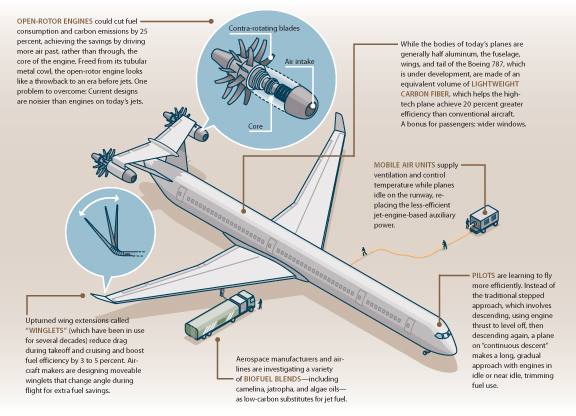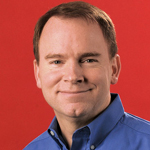sierraclub.org - sierra magazine - September/October 2009 - innovate


Innovate | Friendlier Skies
By Myron Levin
Commercial aircraft produce 2 to 3 percent of the world's greenhouse-gas emissions, and the impact of their gases is greater at higher altitudes than closer to the ground. Under pressure to trim costs and achieve a lower carbon "wingprint," air carriers have gradually tackled fuel efficiency. (Particularly motivating are European Union rules that require airlines flying to any of the alliance's 27 countries to cut their carbon emissions by 3 percent starting in 2012 and by 5 percent each year thereafter.) But with air travel expected to rise sharply, major improvements will be required just to keep up.

 As a U.S. Air Force pilot and instructor, Dave Pflieger flew gas-guzzling B-52s. Now he has a different mission: making a young airline and, potentially, the entire airline industry a bit greener.
As a U.S. Air Force pilot and instructor, Dave Pflieger flew gas-guzzling B-52s. Now he has a different mission: making a young airline and, potentially, the entire airline industry a bit greener.
As senior vice president and general counsel for Virgin America, Pflieger oversees sustainability efforts for the California-based carrier. In April the airline became the first to pledge to report its annual greenhouse-gas emissions. There's a reason the company isn't as reticent on the subject as its rivals: Virgin America boasts that it is 25 percent more fuel- and carbon-efficient than the average airline.
Unlike some other airline start-ups that used older, cheaper aircraft to get off the ground, Virgin America launched in 2007 with an all-new fleet of 28 planes. The company says it has also rigorously followed conservation practices such as single-engine taxiing, reduced-thrust takeoffs, lower cruising speeds, and plugging into ground-based electricity instead of the jet's auxiliary power.
The strategy is, "in a lot of respects, a no-brainer," Pflieger says. And with fuel accounting for more than a third of operating costs, greater efficiency, he notes, "is also good for our bottom line."
Reporting carbon emissions and reducing them are two different things. Putting out the numbers could reveal "who's the best and who's the worst, and use peer pressure to get everybody to get better," Pflieger says.
Pflieger, 46, a graduate of the U.S. Naval Academy, says that his old bomber-pilot buddies "might find it ironic that I drive a Prius and operate a battery-powered lawnmower and am trying to make an airline more environmentally sustainable. But somebody's got to do it."
Infographic: Brian Kaas; photo: courtesy of Virgin America; used with permission